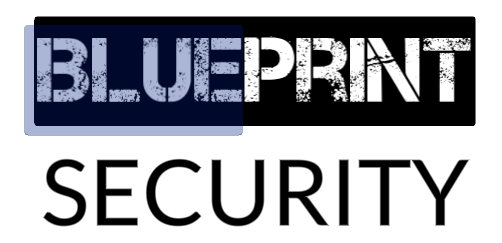The history of the Gramm-Leach-Bliley Act and the Subsequent Federal Trade Commission (FTC) Safeguards Rule
The Gramm-Leach-Bliley Act (GLBA) act was passed in November of 1999 after the merger of Citibank and Travelers Group. The passage of GLBA allowed banks to offer additional financial services (i.e., investment) previously restricted by the Glass-Steagall Act that was created following the Great Depression. In addition to reforming the financial services industry, GLBA also addressed concerns regarding consumer privacy and dissemination of consumer data to third-parties along with the ability to “opt-out”. Additionally, the act put the responsibility for any data breaches of those organizations on the board of directors. It required the FTC and other federal agencies to carry out the act’s provisions. Specifically, it requires financial institutions – companies that offer consumers financial products or services like loans, financial or investment advice, or insurance – to explain their information-sharing practices to their customers and to safeguard sensitive data. The FTC was to be responsible for enforcing the Privacy of Consumer Financial Information (Privacy Rule).
Originally set to require compliance in 2001, the GLBA provides a framework for regulating the privacy and data security practices of a broad range of financial institutions. Among other things, the GLBA requires financial institutions to provide customers with information about the institutions' privacy practices and about their opt-out rights, and to implement security safeguards for customer information. Subtitle A of Title V of the GLBA required the Commission and other Federal agencies to establish standards for financial institutions relating to administrative, technical, and physical safeguards for certain information. Based on the GLBA directive, the FTC promoted the Safeguards Rule in 2002 and became effective in May of 2003.
Following industry and consumer group input and subsequent Commission workshops in 2020, it issued the final amendments to the Safeguards Rule in December of 2021 that also included breach notification requirements. Due to delays caused by the pandemic, effective May 13, 2024, 16 CFR Part 314: Standards for Safeguarding Customer Information requires financial institutions to report to the Commission any notification event where unencrypted customer information involving 500 or more consumers is acquired without authorization.
The Safeguards Rule
Regarding sections 501 and 505 (b)(2) of the GLBA, the Safeguards Rule provides expected standards for the development, implementation, and maintenance of reasonable administrative, technical and physical safeguards to protect the availability, confidentiality, and integrity of customer data. The scope is regarding the handling of customer information by all financial institutions under FTC jurisdiction (those financial institutions not otherwise subject to the enforcement authority of another regulator). Those entities include lenders, brokers, servicers, counselors, and advisors across any industry that is, as mentioned above, not under any other regulatory authority. Some examples are mortgage lenders, “pay day” lenders, finance companies, mortgage brokers, account servicers, check cashers, wire transferors, auto dealers, and financial, collection, and tax advisors and agencies.
Information Security Requirements of the Safeguards Rule
The elements of the Safeguard Rule include information security best-practices that should be part of any organization. While the Safeguard requirements are not comprehensive regarding controls that make up a complete Cybersecurity Framework (CSF), they provide a baseline of controls that will substantially improve an organization’s ability to manage and protect clients’ private information. The Rule includes the following items as a minimum baseline for compliance:
- Designate a qualified individual responsible for overseeing and implementing your information security program and enforcing your information security program.
- Base your information security program on a risk assessment that identifies reasonably foreseeable internal and external risks to the security, confidentiality, and integrity of customer information.
- Design and implement safeguards to control the risks identified through your risk assessment.
- Implement and periodically review access controls.
- Perform an asset inventory – where is data collected, stored, or transmitted.
- Encrypt customer data at rest and in transit.
- Assess applications.
- Implement multi-factor authentication (MFA) using two of three: what you know (password), what you have (token key), what you are (fingerprint, face scan, etc).
- Secure data disposal (specifically customer data) within two years of last use.
- Implement change control processes and reporting.
- Maintain and report on system logs regarding information and system access.
- Periodically monitor and test the effectiveness of your safeguards.
- Train your staff on information security and threat awareness.
- Oversee service providers by selecting third-parties who are capable of maintaining appropriate safeguards, who are under contract with you to implement and maintain those safeguards, and who pass periodic risk assessment baselines.
- Periodically evaluate and adjust your information security program based on the results of the testing and monitoring.
- Establish a written incident response plan designed to promptly respond to, and recover from, any security event materially affecting the confidentiality, integrity, or availability of customer information in your control.
- Require your Qualified Individual to report in writing, regularly and at least annually, to your board of directors or equivalent governing body.
What Does This Mean for My Business?
In reality, the safeguards listed above are recommended for any business to protect its clients, staff, and the business itself. Those items would be considered prudent and best practices in the effort to manage risk that is inherent in today’s connected world. Additionally, many of those items are not expensive in the grand scheme of things versus the cost of a data breach. Those breach costs include the breach response itself, the likely loss of revenue, long-term damage to reputation and credibility, increased costs or complete loss of insurance, and potential fines and civil suit losses due to employee and customer impacts. The majority of small and medium businesses do not recover from those costs. Many best practices and effective solutions exist to support risk management and the compliance with these safeguards.
Contact Blueprint Security to find out more about how we can help with proven solutions to ensure your successful path toward a mature and effective information security program.
(612) 564-3030
info@blueprintsecurity.net




